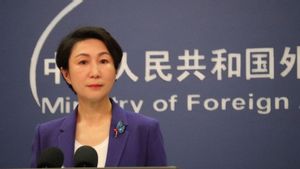JAKARTA - The Ministry of Religion's Halal Product Assurance Agency (BPJPH) has released a new halal label which will gradually replace the MUI halal label on the packaging of a product.
However, the new halal label actually caused a different assessment in the community. Starting to impose too much Java-centric because it is shaped like a mountain of wayang so that it is considered difficult for consumers to recognize.
Member of Commission VIII of the DPR, Bukhori Yusuf, revealed that there were several weaknesses in the new halal label issued by the Ministry of Religion. In fact, he said, there is a risk of harming Muslim consumers.
Bukhori explained that the level of readability of 'halal' calligraphy in the new label was inadequate, making it difficult for consumers to recognize halal products.
In fact, according to him, in every halal label, the most significant element to pay attention to in order to make consumers easily and quickly identify the product is the word halal element.
"Although the halal certificate issuing authority in every country in the world has its own characteristics, especially in the label section, there are characteristics that are in common with each other, namely the emphasis on Islamic elements as reflected in the use of halal calligraphy," said Bukhori Yusuf. , Monday, March 14.
This PKS politician said that the majority of halal labels in the world use calligraphy or Kufi and Nasakh as their trademark. Meanwhile, in terms of ornament, almost 80 percent of halal labels in the world are circular, which philosophically means the human life cycle.
With these characteristics, said Bukhori, there is a kind of unified theme from halal labels around the world so that halal products are easily recognized by Muslims around the world. Especially for those who often carry out cross-country mobility.
"The essence of the label is to simplify. Ideally, a maximum of two seconds consumers can identify the product," he said.
In addition, Bukhori continued, the choice of purple on the new halal label does not reflect the image of Islam and instead has a bad psychological effect on consumers.
"The choice of purple color is not relevant to Islamic elements. The reason is that the majority of halal labels in various countries in the world use green elements as one of the color combinations. Because green is synonymous with Islamic and Muslim identity," he explained.
For example, added Bukhari, are the colors of the flags of a number of Muslim countries such as Saudi Arabia, Palestine, and Pakistan. Where green is one of the elements of the color combination.
"This is understandable considering, historically, the use of green color cannot be separated from the assumption that this color is the most preferred color of the Prophet Muhammad SAW," added Bukhori.
The English, Chinese, Japanese, Arabic, and French versions are automatically generated by the AI. So there may still be inaccuracies in translating, please always see Indonesian as our main language. (system supported by DigitalSiber.id)










